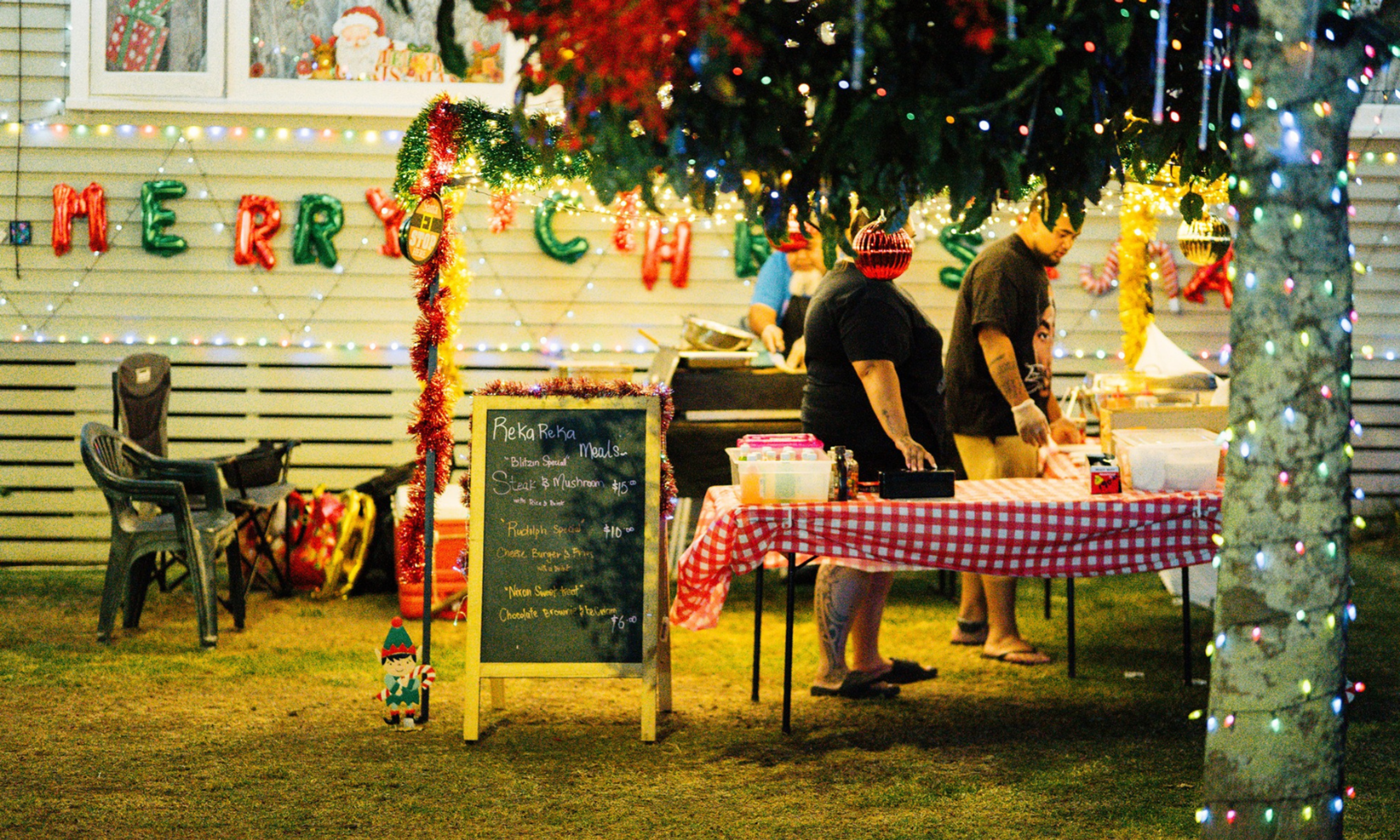

The original US Coast Guard crew of Unit 93 stationed in Atafu during the Second World War.
Photo/Loran-History
Tuning in from Tokelau: When the US forces brought WWII to Atafu
A glimpse into a little-known chapter of Pacific history as US Coast Guardsman Roger Kehm writes about his time in Atafu during the Second World War.



Pacific sports wrap: 2025’s massive highs, lows and historic firsts


Top 10 Pacific Island songs you need on your summer playlist in 2025


Pacific sports wrap: 2025’s massive highs, lows and historic firsts

As World War II waged in Europe from 1939, Atafu atoll in Tokelau was a peaceful haven that had little to do with the hostilities abroad.
Allied flying boats routinely touched down on Atafu’s vast and safe lagoon, but Tokelau was mostly left alone.
That changed when the US Coast Guard arrived in May 1944 to set up a Loran (Long-Range Navigation) radio navigation station on Atafu, one of the three atolls that make up Tokelau.
The Americans officially joined the war effort in December 1941, after the Japanese attacked Pearl Harbor in Hawaii.
But the building of the Loran Station in Atafu didn't begin until May 1944. The station was officially operational from November 1944 to May 1946. World War II ended on 2 September 1945.
Atafu was selected as part of a surveillance system - air, sea, and underwater (submarine) - because of its location in the central Pacific. The plan was to radio to a ring of stations, any sightings of the Japanese, Germans or their allies.
About five hectares of leased Atafu land was bulldozed and cleared to build the facility.
Among the Americans stationed in Atafu was Roger Kehm, a US Coast Guardsman who later reflected warmly on his time in Atafu.
“There were about 400 natives on the island, and they were Polynesian people,” he wrote.

Roger Kehm on guard duty in Atafu during World War II. Photo/Kehm.
“They were extremely friendly and helpful to the Coast Guard. All of us ‘Coasties’ were adopted by a family in the village. We were known as having a true friend."
Kehm’s host family - Aluia, Pua, and their daughter Meliani - became close companions. Pua washed his clothes, and Meliani or other village children would fan him to keep him cool during the hot afternoons.
After long shifts at the station, Kehm regularly stayed in his hosts' thatched-roof home, finding peace and rest in their company.

The Atafu village missionary church where the US Coast Guard crew would listen to familiar hymns. Photo/Kehm
“I would often go down to their house on Sunday morning and listen to the singing of hymns from the church across the way. The people were good singers and they sang loud and clear,” he remembered.
But not every interaction was pleasant. Kehm recalled a Sāmoan missionary stationed in Atafu who treated the local people poorly and hoarded food intended for the whole community.
“He acted like a little king,” Kehm wrote, noting that the Coast Guard eventually responded with an unconventional protest, adding soap powder to his meals on the days he took more than his share.

Atafu community playing kilikiti during World War II. Photo/Kehm
Despite that episode, the relationship between the Coast Guard and the people of Atafu was overwhelmingly positive, according to Kehm.
Local men came to the station daily to help with maintenance, crafts, and repairs. The community held weekly hula dances, at which villagers and Coast Guardsmen took turns performing.
Kehm played a small wind instrument called an ocarina one night, which earned him a regular spot in the lineup.

A LCM (landing craft mechanised) was used to bring in a tractor and supplies for building the Loran station. Photo/Kehm
When the station's construction was complete and most of the American personnel had left, about 25 men from Unit 93 remained to operate it.
Their commanding officer initially read out rules restricting interaction with the locals, which aligned with New Zealand’s governance of the territory. But the officer refused to enforce them.
“We would be on Atafu a long time,” Kehm quoted him saying, “and it would be unenforceable.” Still, there were boundaries.

Some of the original Loran Station crew in Atafu. Photo/Kehm
One Coast Guardsman, who became involved with a local woman, was reassigned to the desolate Baker Island - “no vegetation, just coral, and no natives", Kehm noted.
When the war ended, Kehm gave his host family USD$50, about NZD$850 in today’s money, for their journey to New Zealand.
“They were very good friends,” he wrote.

The US Coast Guard Loran Unit 93 based in Atafu during World War II. Photo/Kehm

Contact with the outside world was possible about every six weeks, when a PBY Catalina plane would land in the Atafu lagoon with mail and supplies. Photo/Kehm
This story has been adapted from Samson Samasoni's writing on the Atafu Tokelau Community Group website www.matauala.org.nz